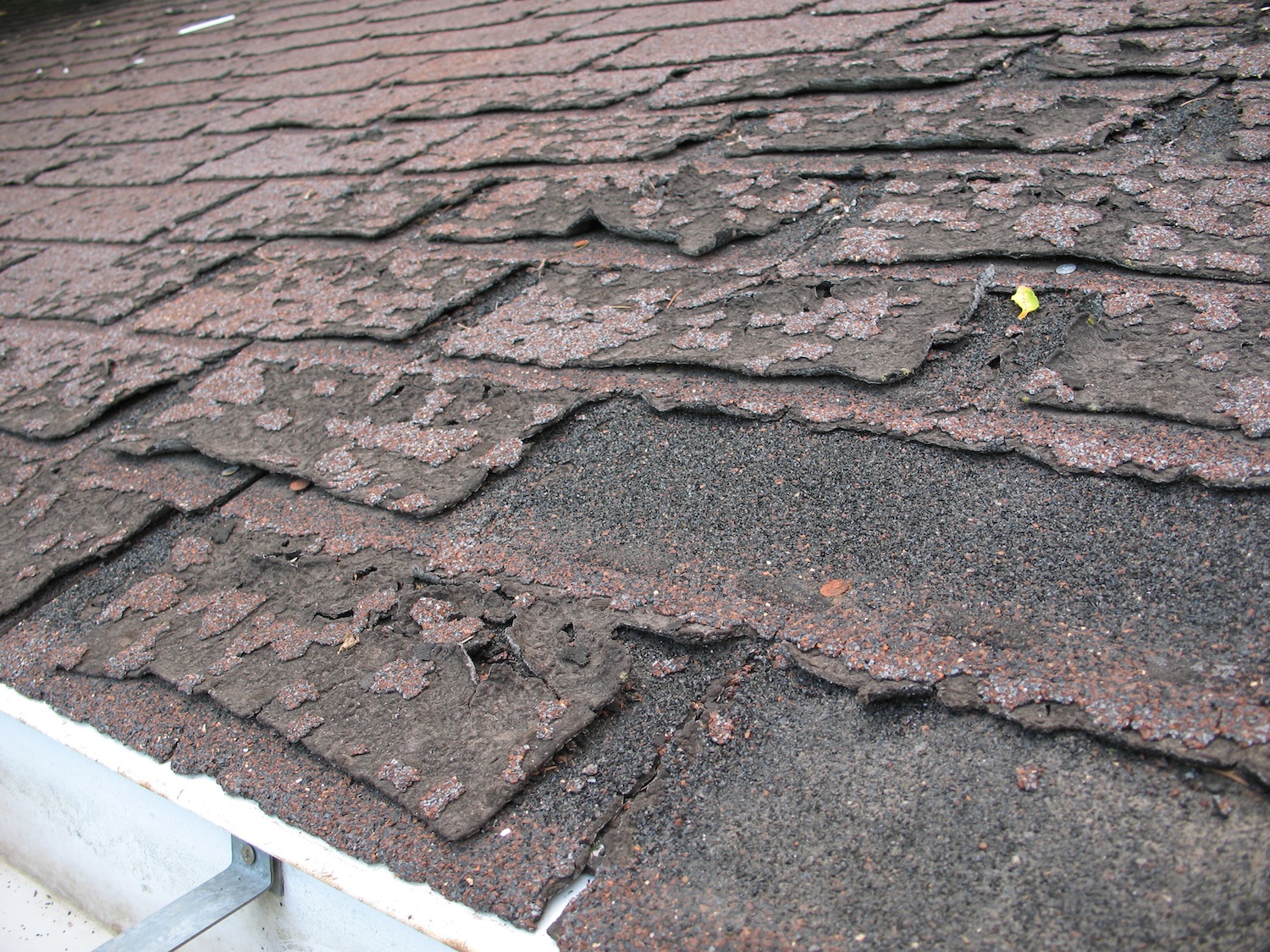The Signs of Rooftop Failure
It’s your home’s hat. An umbrella. A lid for the family pot, if you will. And it is one of the most important aspects of any sound building. Unfortunately, your roof is also one of the most common problem areas found during a home inspection.
Your roof takes a lot of wear and tear!
The integrity of the roof of any building is critical because of the fact that it takes the brunt of the weather, from high winds that can lift and tear roofing materials, driving rain that can penetrate improperly installed shingles, snow and ice that can cause leaks and add a heavy strain to the underlying structure, moisture that can cause mold and rot, and even the sun, which can dry out shingles and cause premature aging of some roofing materials.
Of course, moisture is the main concern. While a roof protects your home in many ways, water leaks cause the most problems. When water infiltrates your home at the top of the building, it only stands to reason that gravity will take it downward – to the interior of the home – where it will be absorbed by lumber, insulation and surface materials.
Small leaks can go undetected for years, surfacing only after a severe weather event or discovered during a renovation. Many homeowners have found out how damaging – and costly – undetected leaks can be. That is why it is important to visually inspect your roof regularly.
Rooftop Inspection
Though not all problems occur on the roof surface itself – where you can see them – most problems do show signs on the surface. Using a pair of binoculars, check for these omens of roof problems:
 Cupped, Curled Shingles – Asphalt shingles, still the most popular roofing material, will cup and curl as they age, so this can simply mean it is time to replace. But if cupping happens prematurely, it can be a sign that the attic is too warm and/or humid – that better insulation is needed or perhaps better ventilation.
Cupped, Curled Shingles – Asphalt shingles, still the most popular roofing material, will cup and curl as they age, so this can simply mean it is time to replace. But if cupping happens prematurely, it can be a sign that the attic is too warm and/or humid – that better insulation is needed or perhaps better ventilation.
Big Mouths – Standard shingles have 3 tabs separated by a slot or ‘mouth’. That slot will grow wider over time. Big mouths are like curling and cupping shingles and can be a sign of the same concerns as noted above.
Moss Build-Up – An accumulation of moss and surface growth may be caused by overhanging tree branches or simply shade that causes constant dampness on the roof’s surface. Keep moss from accumulating because it can lead to a premature break-down of the roofing material. Trim back offending trees. And if the shading cannot be avoided, source an eco-friendly ‘roof wash’ that can be applied to remove the moss.
Broken or Missing Shingles – This can be caused by severe wind, animals looking for a way in to that warm attic space, or low-hanging tree branches brushing against the roof in high winds or when laden with snow and ice. Any such concern needs to be addressed right away to avoid a bigger problem – and expense.
Stained Facia – The ‘facia’ is the vertical board – or face board – at the drip edge of the roof. It is often covered partially by the eaves trough. Look for staining, discolouration or mold, all signs of trouble. Rain water may be getting between the trough and facia and causing the problem. Or dampness inside the attic space may be to blame.
Build-up of Debris – With some new roof designs that incorporate many different surfaces and sections, or with townhomes, semis and homes with no side yards – that are close to one another – there can be areas of the roof that receive little wind. This can cause a buildup of tree debris – leaves, dead branches, nuts, etc. – that can prematurely age a roof’s surface.
Bird Poop – The distinctive white build-up is a sign that birds have found a spot for their nest. It could be that they found a way in, or just a protected area that they like. Either way, once their young have fledged, address the problem to discourage birds from building nests.
Other Animal Feces – Animals tend to be creatures of habit. If some have the habit of using your roof as a toilet, it means they go up there regularly. In addition to the fact that the feces itself smells and that it will cause premature aging of many roof material, given time, the animals will usually find other areas to damage. Stop their routine by cutting back trees that have grown large enough to provide access for them. Raccoons and squirrels are the usual culprits.
Vents and Chimneys – A common problem area on any roof is attic vents, plumbing stacks, chimneys, etc. Though there are wonderfully designed flashing systems and sealing material to prevent a problem, they have to be applied properly. Unfortunately that is not always the case. Plus, time and the elements can cause cracks and material breaks that can lead to leaks.
Note: Poorly-Manufactured Shingles – There have been some law suits against some asphalt shingle manufacturers because of premature aging and deterioration of their product. If your home’s roof shows signs of aging well before it should, and if there are no other mitigating factors as noted above, check with the installer (if you know who that was) or surf the internet for lawsuit information to see if you qualify for a partial refund.
